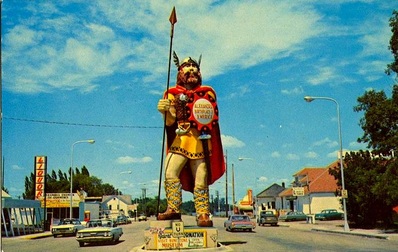HISTORY
|
Alexandria got its start in 1858 – the same year Minnesota became a state. Brothers Alexander and William Kinkead of Delaware traveled along the Red River Trail, stopping to establish a settlement on the shores of Lake Agnes. Alexander served as the first Postmaster. The town site was named “Alexandria” in his honor.
In 1859 a state road was cut through the area, opening new doors for future settlement. The J.C. Burbank Stage line came through and by the time the Civil War started in 1861, the town was growing steadily. All was abandoned in 1862, however, when a Sioux uprising drove settlers east to safety. Settlers returned to the area after the uprising settled down, and the U.S. Army erected a stockade at the town site. Alexandria became a government post until treaties were signed with the Sioux and the troops left in the spring of 1866. |
That same year, Douglas County’s boundaries were officially set. The county was named for Senator Steven Douglas who helped with its establishment. A government land office was set up in Alexandria and the signing of the Homestead Act by President Lincoln brought a surge of European immigrants and Civil War veterans. Eventually the Soo Line crossed the county, bringing even more settlers to the area. With the wealth of fish and game in the area, the railroad also brought many tourists so this area, which quickly became a popular vacation spot.
Click here to view Big Ole live!
CAMERA AND LIVE FEED BANDWIDTH PROVIDED BY ALP BUSINESS COMMUNICATIONS AND EXPLORE ALEXANDRIA TOURISM
|
|






